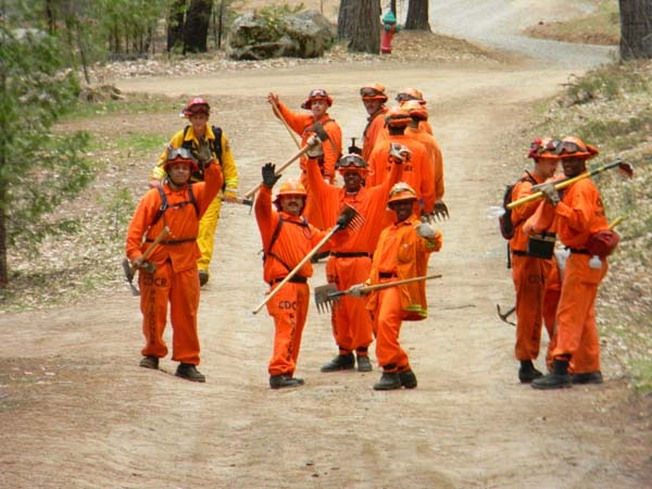WawonaNews.com - April 2013
Don’t Forget to Submit Your Comments on the Merced River Plan!

The Merced Wild and Scenic River Draft Comprehensive Management Plan and Environmental Impact Statement is available for review and comment through April 18, 2013. The draft plan has been available for public review since January 8, 2013.
For a copy of the plan and a complete description of all alternatives, please visit the park's website at www.nps.gov/yose/parkmgmt/mrp. htm (MRP). Comments can be made at the public meetings or through the Planning Environment and Public Comment (PEPC) website at http://parkplanning.nps.gov/mrp_deis. Comments made through the PEPC website are the preferred method of submission. Comments can also be sent via email to [email protected], via fax to 209-379-1294, or via U.S. mail to:
Superintendent
Yosemite National Park
Attn: Merced River Plan
P.O. Box 577
Yosemite, CA 95389
For a copy of the plan and a complete description of all alternatives, please visit the park's website at www.nps.gov/yose/parkmgmt/mrp. htm (MRP). Comments can be made at the public meetings or through the Planning Environment and Public Comment (PEPC) website at http://parkplanning.nps.gov/mrp_deis. Comments made through the PEPC website are the preferred method of submission. Comments can also be sent via email to [email protected], via fax to 209-379-1294, or via U.S. mail to:
Superintendent
Yosemite National Park
Attn: Merced River Plan
P.O. Box 577
Yosemite, CA 95389
Public Meetings Start this Week for the Mariposa Grove DEIS
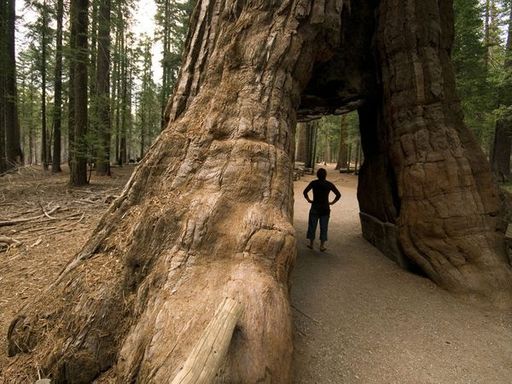
Join us Tuesday, April 9, 2013, from 2-3 pm PDT for a webinar or Friday, April 11 from 2-4 pm at Tenaya Lodge in Fish Camp for to learn about the Restoration of the Mariposa Grove of Giant Sequoias Draft Environmental Impact Statement.
The webinar will provide a brief overview of the plan, followed by an interactive question and answer session. To participate in the webinar, please visit http://yose.webex.com. The webinar will be recorded and available for download from this same website afterward.
Two public meetings have also been scheduled. Public meetings are an opportunity for the public to learn more information about each plan, interact with park staff, and provide feedback. The meetings will consist of a short presentation about the plan and an open house with background materials about the plan.
The webinar and meetings schedule for the Mariposa Grove DEIS is:
Webinar
Tuesday, April 9, 2013, 2:00–3:00 p.m. Register at http://yose.webex.com
Public Meetings
Friday, April 12, 2013, 2:00p.m. – 4:00 p.m. Tenaya Lodge – Forest View Room, 1122 Highway 41, Fish Camp, CA. Doors open at 2:00 p.m. - Presentation at 2:30 p.m.
Wednesday, April 24, 2013, 1:00 p.m. – 4:00 p.m. Visitor Center Auditorium (Open House), Yosemite Valley, CA. Doors open at 1:00 p.m. - Presentation at 2:00 p.m.
The Mariposa Grove of Giant Sequoias, the largest of three relict groves within Yosemite National Park, contains approximately 500 giant sequoia trees. Giant sequoias are an iconic species, being among the rarest, oldest and largest living organisms in the world. The big trees so inspired early visitors that in 1864, in the midst of the Civil War, Congress passed landmark legislation to permanently preserve both the Mariposa Grove and Yosemite Valley “for public use, resort, and recreation” and were the first federally protected scenic areas in the country.
On Feburary 26, 2013, Yosemite National Park released the Restoration of the Mariposa Grove of Giant Sequoias Draft Environmental Impact Statement (Mariposa Grove DEIS) for public review and comment. The public comment period for the Mariposa Grove DEIS is open through Tuesday, May 7, 2013. Please visit www.nps.gov/yose/parkmgmt/mgrove_documents.htm for a copy of the plan, a complete description of all alternatives, and the most up to date information. Comments regarding the Mariposa Grove DEIS can be made at the public meetings or through the Planning Environment and Public Comment (PEPC) website at: http://parkplanning.nps.gov/mariposagrove. Comments made through the PEPC website are the preferred method of submission. Comments can also be sent via email to [email protected], via fax to 209-379-1294, or via U.S. mail to:
Superintendent
Yosemite National Park
Attn: Mariposa Grove Draft Plan
P.O. Box 577
Yosemite, CA 95389
Prescribed Fire Near Wawona Postponed Another Week
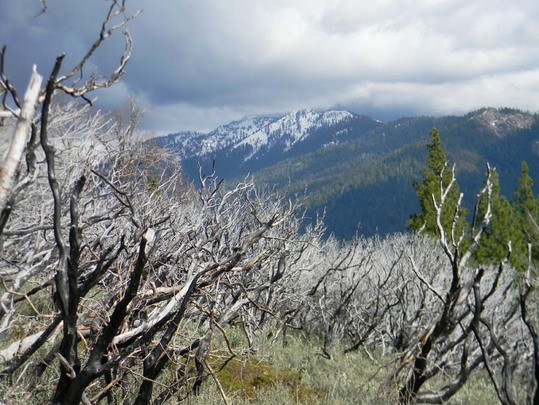
Wawona NW area scheduled for controlled burn
Due to continued rain and snow, the Wawona Northwest Prescribed Fire in Yosemite National Park has been postponed for another week. It is now scheduled to begin on Tuesday, April 16, but the date could change again if the forecasted drying trend is delayed.
Park fire crews will use the opportunity of the extended wet weather to burn more piles on park lands in the communities of Foresta, Wawona and El Portal. These piles of cut vegetation are leftover from previous mechanical fuel reduction projects.
For more information about the upcoming Wawona Northwest Prescribed Fire, contact Jennifer Chapman at 415-464-5133 or [email protected]
### Jennifer Chapman
Fire Communication and Education Specialist
415-464-5133
Park fire crews will use the opportunity of the extended wet weather to burn more piles on park lands in the communities of Foresta, Wawona and El Portal. These piles of cut vegetation are leftover from previous mechanical fuel reduction projects.
For more information about the upcoming Wawona Northwest Prescribed Fire, contact Jennifer Chapman at 415-464-5133 or [email protected]
### Jennifer Chapman
Fire Communication and Education Specialist
415-464-5133
Wawona Events 2013
|
April 12: Public Meeting for the Mariposa Grove DEIS: Friday, April 12, 2013, 2— 3 p.m. Tenaya Lodge, Fish Camp
April 12—14: Redwoods scheduled owners’ meetings and dinner. See your Homeowners’ newsletter for scheduled times. April 13: WAPOA Wawona Community Center 9 a.m. April 13: Wawona School Fundraiser Silent Auction and BBQ 11:30 a.m.—2:30 p.m. April 20: Poetry Reading at the Library 3 p.m. |
|
June 3—7: Wawona Needle Pickup by Mariposa County Public Works
June 7: Wawona Friends of the Library Annual Membership Board meeting in the library 3 p.m.
June 8: WAPOA Wawona Community Center 9 a.m.
July 4: Square Dance at the Gray Barn 8-10 p.m.
July 13: Square Dance at the Gray Barn 8—10 p.m.
July 27: Square Dance at the Gray Barn 8-10 p.m.
August 10: Square Dance at the Gray Barn 8-10 p.m.
August 31: Wawona Friends of the Library Annual Book/Bake/Craft Sale 9 a.m.-3 p.m.
Library parking lot~ Rain moves the sale to the Wawona Community Center
August 31: Square Dance at the Gray Barn 8 -10 p.m.
September 7 : WAPOA Wawona Community Center 9 a.m.
June 7: Wawona Friends of the Library Annual Membership Board meeting in the library 3 p.m.
June 8: WAPOA Wawona Community Center 9 a.m.
July 4: Square Dance at the Gray Barn 8-10 p.m.
July 13: Square Dance at the Gray Barn 8—10 p.m.
July 27: Square Dance at the Gray Barn 8-10 p.m.
August 10: Square Dance at the Gray Barn 8-10 p.m.
August 31: Wawona Friends of the Library Annual Book/Bake/Craft Sale 9 a.m.-3 p.m.
Library parking lot~ Rain moves the sale to the Wawona Community Center
August 31: Square Dance at the Gray Barn 8 -10 p.m.
September 7 : WAPOA Wawona Community Center 9 a.m.
Should National Parks Be Strictly Wild?
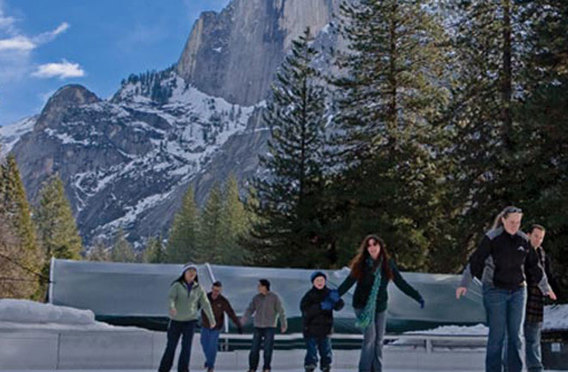
The skating rink at Yosemite Valley would be removed under a proposed plan.
Mar 28, 2013 07:00 AM ET // by Sheila M. Eldred
As Yosemite National Park prepares to welcome millions of visitors to its mecca of rock walls, waterfalls and valleys this summer, it's also gauging public reaction to plans that could change the recreational landscape of one of the nation's most visited parks.
In January, the National Park Service released its draft plan for managing the Merced River corridor for the next 20 years. Because of an attempt by a developer to dam parts of the river in the '80s, the river was designated as a "national wild and scenic river." Since then, lawsuits have debated exactly what that means. Now, the Park Service finds itself in the unpopular position of balancing competing interests.
The mission of national parks, said Kathleen Morse, planning division chief of Yosemite, is for people to enjoy them while protecting them for the future. "It continues to be a struggle to do both things well," she said.
Because Yosemite is in the spotlight of national parks, many are watching how decisions will be made there regarding how wild vs. developed a national park should be.
"Without a doubt Yosemite is a trendsetter at the forefront of issues, good or bad, in having this debate," said Mike Marshall, executive director of Restore Hetch Hetchy, a group hoping to restore one of Yosemite’s valleys that has been dammed and used as a reservoir for about 100 years.
Most of the media attention has focused on a few recreational activities that would close or be limited: the skating rink would close, one or two swimming pools would close, and commercial outfitters would not be allowed to rent bikes or rafts, although those activities could continue with visitors’ personal equipment.
The plan also calls for major restoration of the river banks, protecting meadows, revised traffic routing to improve congestion and alleviate impact to the river, and changes to parking.
In the midst of a 90-day comment period, the plan has drawn criticism from both sides. Some, like Rep. Tom McClintock, a Republican from Granite Bay, have likened the restrictions on recreation to harassment. Others say the park should take greater steps toward restoring the wilderness.
"We applaud the Park Service for restoring the riverbanks and protecting the meadows, but this was a stark opportunity to do a lot more," said John Brady, chairman of Mariposans for the Environment and Responsible Government, an environmental group.
"The Park Service says it wants to maintain the traditions that generations of families have enjoyed, but we think it should be enjoyed for its natural purposes. There are people who would like to make it into something along the lines of a nature amusement park, and we want to restore as much as we can and preserve and protect as much as we can. If people want to go to Disneyland, they can do so."
Marshall agrees.
"It's a national park because of its scenic natural values, not because it has a great swimming pool or a fun place to skate on Christmas Eve," Marshall said. "That's all great, and we have to have our national parks be attractive to families so they’ll visit, but I'd argue that a hike is a better family outing in Yosemite than driving 4-6 hours to go ice skating."
Marshall's group is hoping to restore another area unique to Yosemite: the Hetch Hetchy valley currently acts as a reservoir that supplies San Francisco with water. A ballot question to San Franciscans to restore the reservoir to its natural state failed last fall, but the group remains hopeful.
"If we're really concerned about human impact, we need to look at the entirety of the park," Marshall said. "From my perspective, closing a swimming pool or an ice rink pales in comparison to the opportunity to restore Hetch Hetchy valley. It's great that the park service is trying to think creatively about how to reverse the development of the 20th century to meet the concerns of the 21st century to protect the habitat, but if you want to be really effective, restore Hetch Hetchy."
Over the summer, the environmental impact statement will be finalized, and then it will be presented to the court for approval.
As Yosemite National Park prepares to welcome millions of visitors to its mecca of rock walls, waterfalls and valleys this summer, it's also gauging public reaction to plans that could change the recreational landscape of one of the nation's most visited parks.
In January, the National Park Service released its draft plan for managing the Merced River corridor for the next 20 years. Because of an attempt by a developer to dam parts of the river in the '80s, the river was designated as a "national wild and scenic river." Since then, lawsuits have debated exactly what that means. Now, the Park Service finds itself in the unpopular position of balancing competing interests.
The mission of national parks, said Kathleen Morse, planning division chief of Yosemite, is for people to enjoy them while protecting them for the future. "It continues to be a struggle to do both things well," she said.
Because Yosemite is in the spotlight of national parks, many are watching how decisions will be made there regarding how wild vs. developed a national park should be.
"Without a doubt Yosemite is a trendsetter at the forefront of issues, good or bad, in having this debate," said Mike Marshall, executive director of Restore Hetch Hetchy, a group hoping to restore one of Yosemite’s valleys that has been dammed and used as a reservoir for about 100 years.
Most of the media attention has focused on a few recreational activities that would close or be limited: the skating rink would close, one or two swimming pools would close, and commercial outfitters would not be allowed to rent bikes or rafts, although those activities could continue with visitors’ personal equipment.
The plan also calls for major restoration of the river banks, protecting meadows, revised traffic routing to improve congestion and alleviate impact to the river, and changes to parking.
In the midst of a 90-day comment period, the plan has drawn criticism from both sides. Some, like Rep. Tom McClintock, a Republican from Granite Bay, have likened the restrictions on recreation to harassment. Others say the park should take greater steps toward restoring the wilderness.
"We applaud the Park Service for restoring the riverbanks and protecting the meadows, but this was a stark opportunity to do a lot more," said John Brady, chairman of Mariposans for the Environment and Responsible Government, an environmental group.
"The Park Service says it wants to maintain the traditions that generations of families have enjoyed, but we think it should be enjoyed for its natural purposes. There are people who would like to make it into something along the lines of a nature amusement park, and we want to restore as much as we can and preserve and protect as much as we can. If people want to go to Disneyland, they can do so."
Marshall agrees.
"It's a national park because of its scenic natural values, not because it has a great swimming pool or a fun place to skate on Christmas Eve," Marshall said. "That's all great, and we have to have our national parks be attractive to families so they’ll visit, but I'd argue that a hike is a better family outing in Yosemite than driving 4-6 hours to go ice skating."
Marshall's group is hoping to restore another area unique to Yosemite: the Hetch Hetchy valley currently acts as a reservoir that supplies San Francisco with water. A ballot question to San Franciscans to restore the reservoir to its natural state failed last fall, but the group remains hopeful.
"If we're really concerned about human impact, we need to look at the entirety of the park," Marshall said. "From my perspective, closing a swimming pool or an ice rink pales in comparison to the opportunity to restore Hetch Hetchy valley. It's great that the park service is trying to think creatively about how to reverse the development of the 20th century to meet the concerns of the 21st century to protect the habitat, but if you want to be really effective, restore Hetch Hetchy."
Over the summer, the environmental impact statement will be finalized, and then it will be presented to the court for approval.
Fire crew completes preparation of perimeter surrounding upcoming control burn area
March 26 - The fire crew working on the perimeter surrounding the Wawona Northwest area completed their work Tuesday afternoon in preparation for the upcoming prescribed fire, now re-scheduled for April 8 or 9.
The primary objective is to reduce hazardous fuels within the mixed conifer forest adjacent to the Wildland Urban Interface (WUI) community of Wawona at the south end of Yosemite. This project creates a large continuous area of reduced fuel by linking together multiple previous fires and treatments including the 2007 and 2008 Wawona Northwest prescribed fires, the 2007 Jack wildfire which was caused by lightning, and a series of mechanical vegetation thinning projects in the 2000’s.
The primary objective is to reduce hazardous fuels within the mixed conifer forest adjacent to the Wildland Urban Interface (WUI) community of Wawona at the south end of Yosemite. This project creates a large continuous area of reduced fuel by linking together multiple previous fires and treatments including the 2007 and 2008 Wawona Northwest prescribed fires, the 2007 Jack wildfire which was caused by lightning, and a series of mechanical vegetation thinning projects in the 2000’s.
Public Meetings for the Mariposa Grove DEIS
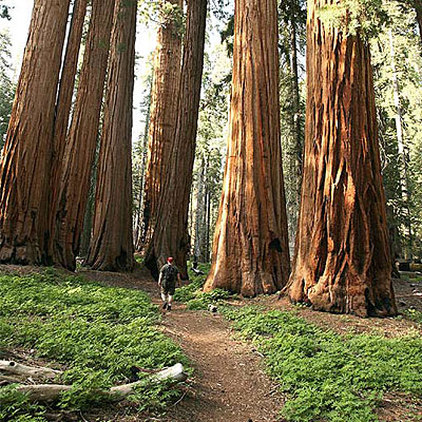
The Mariposa Grove of Giant Sequoias, the largest of three relict groves within Yosemite National Park, contains approximately 500 giant sequoia trees. Giant sequoias are an iconic species, being among the rarest, oldest and largest living organisms in the world. The big trees so inspired early visitors that in 1864, in the midst of the Civil War, Congress passed landmark legislation to permanently preserve both the Mariposa Grove and Yosemite Valley “for public use, resort, and recreation” and were the first federally protected scenic areas in the country.
On Feburary 26, 2013, Yosemite National Park released the Restoration of the Mariposa Grove of Giant Sequoias Draft Environmental Impact Statement (Mariposa Grove DEIS) for public review and comment. The public comment period for the Mariposa Grove DEIS is open through Tuesday, May 7, 2013. The document is available for public review on the park’s website.
A webinar and several public meetings have been scheduled to discuss the plan. A webinar generally provides a brief overview of select key topics, followed by an interactive question and answer session. To participate in the webinar, please visit http://yose.webex.com. The webinar will be recorded and available for download from this same website afterward. Two public meetings have also been scheduled. Public meetings are an opportunity for the public to learn more information about each plan, interact with park staff, and provide feedback. The meetings will consist of a short presentation about the plan, a question and answer session with park managers and planners, and an open house with background materials about the plan. The webinar and meetings schedule for the Mariposa Grove DEIS is:
Webinar
Tuesday, April 9, 2013, 2:00–4:00 p.m. Register at http://yose.webex.com
Public Meetings
Friday, April 12, 2013, 2:00p.m. – 3:00 p.m. Tenaya Lodge – Forest View Room, 1122 Highway 41, Fish Camp, CA. Doors open at 2:00 p.m. - Presentation at 2:30 p.m.
Wednesday, April 24, 2013, 1:00 p.m. – 4:00 p.m. Visitor Center Auditorium (Open House), Yosemite Valley, CA. Doors open at 1:00 p.m. - Presentation at 2:00 p.m.
Please visit www.nps.gov/yose/parkmgmt/mgrove_documents.htm for a copy of the plan, a complete description of all alternatives, and the most up to date information. Comments regarding the Mariposa Grove DEIS can be made at the public meetings or through the Planning Environment and Public Comment (PEPC) website at: http://parkplanning.nps.gov/mariposagrove. Comments made through the PEPC website are the preferred method of submission. Comments can also be sent via email to [email protected], via fax to 209-379-1294, or via U.S. mail to:
Superintendent
Yosemite National Park
Attn: Mariposa Grove Draft Plan
P.O. Box 577
Yosemite, CA 95389
Women’s History Month Event and March Open House
Join us on Wednesday, March 27, 2013, from 11:30 am to 12:30 pm in the Yosemite Valley Visitor Center Auditorium for a special event in honor of Women’s History Month.
The regularly scheduled Open House will begin at 1 pm and last until 4 pm. Representatives from both the Merced River Draft Comprehensive Management Plan and EIS and the Mariposa Grove DEIS will be available to discuss the draft plans and answer questions. No formal presentations are scheduled. Park entrance fees are waived for open house attendees.
Final MRP Public Meetings This Week!
Join us in LA on Tuesday, March 26, 2013, from 5-8 pm at the LA River Center and Gardens—Atrium of the California Building for a presentation on the Merced River Draft Plan and EIS. This meetings is an opportunity to learn more information about the plan, interact with park staff, and provide feedback. The meeting will consist of a short presentation about the plan, a question and answer session with park managers and planners, and an open house with background materials about the plan.
Park planners will also be available at the regularly scheduled park open house on Wednesday, March 27, from 1-4 pm. No formal presentation is scheduled at this event, but there will be ample opportunities to ask questions and discuss the plan with park staff.
Merced River Plan Public Meetings
On Feburary 26, 2013, Yosemite National Park released the Restoration of the Mariposa Grove of Giant Sequoias Draft Environmental Impact Statement (Mariposa Grove DEIS) for public review and comment. The public comment period for the Mariposa Grove DEIS is open through Tuesday, May 7, 2013. The document is available for public review on the park’s website.
A webinar and several public meetings have been scheduled to discuss the plan. A webinar generally provides a brief overview of select key topics, followed by an interactive question and answer session. To participate in the webinar, please visit http://yose.webex.com. The webinar will be recorded and available for download from this same website afterward. Two public meetings have also been scheduled. Public meetings are an opportunity for the public to learn more information about each plan, interact with park staff, and provide feedback. The meetings will consist of a short presentation about the plan, a question and answer session with park managers and planners, and an open house with background materials about the plan. The webinar and meetings schedule for the Mariposa Grove DEIS is:
Webinar
Tuesday, April 9, 2013, 2:00–4:00 p.m. Register at http://yose.webex.com
Public Meetings
Friday, April 12, 2013, 2:00p.m. – 3:00 p.m. Tenaya Lodge – Forest View Room, 1122 Highway 41, Fish Camp, CA. Doors open at 2:00 p.m. - Presentation at 2:30 p.m.
Wednesday, April 24, 2013, 1:00 p.m. – 4:00 p.m. Visitor Center Auditorium (Open House), Yosemite Valley, CA. Doors open at 1:00 p.m. - Presentation at 2:00 p.m.
Please visit www.nps.gov/yose/parkmgmt/mgrove_documents.htm for a copy of the plan, a complete description of all alternatives, and the most up to date information. Comments regarding the Mariposa Grove DEIS can be made at the public meetings or through the Planning Environment and Public Comment (PEPC) website at: http://parkplanning.nps.gov/mariposagrove. Comments made through the PEPC website are the preferred method of submission. Comments can also be sent via email to [email protected], via fax to 209-379-1294, or via U.S. mail to:
Superintendent
Yosemite National Park
Attn: Mariposa Grove Draft Plan
P.O. Box 577
Yosemite, CA 95389
Women’s History Month Event and March Open House
Join us on Wednesday, March 27, 2013, from 11:30 am to 12:30 pm in the Yosemite Valley Visitor Center Auditorium for a special event in honor of Women’s History Month.
The regularly scheduled Open House will begin at 1 pm and last until 4 pm. Representatives from both the Merced River Draft Comprehensive Management Plan and EIS and the Mariposa Grove DEIS will be available to discuss the draft plans and answer questions. No formal presentations are scheduled. Park entrance fees are waived for open house attendees.
Final MRP Public Meetings This Week!
Join us in LA on Tuesday, March 26, 2013, from 5-8 pm at the LA River Center and Gardens—Atrium of the California Building for a presentation on the Merced River Draft Plan and EIS. This meetings is an opportunity to learn more information about the plan, interact with park staff, and provide feedback. The meeting will consist of a short presentation about the plan, a question and answer session with park managers and planners, and an open house with background materials about the plan.
Park planners will also be available at the regularly scheduled park open house on Wednesday, March 27, from 1-4 pm. No formal presentation is scheduled at this event, but there will be ample opportunities to ask questions and discuss the plan with park staff.
Merced River Plan Public Meetings
The public comment period for the MRP is open through Thursday, April 18, 2013. To download a copy of the plan or provide a comment visit http://parkplanning.nps.gov/mrp_deis.htm
Want to help plant acorns and restore Yosemite’s oak groves?
An oak restoration project in Yosemite Valley is to begin soon. Our majestic Quercus kelloggii, otherwise known as California black oak, are a topic of inspiration and consternation in Yosemite Valley. Yosemite Resources Management and Science (RMS) is launching a project funded by Yosemite Conservancy this year to take a closer look at why these black oaks have low recruitment rates, and in the process, add new trees to the groves. As you may have noticed, there are few adolescent aged trees in the groves today. We hope to begin planting acorns and seedlings Thursday, March 28, or soon after. RMS leaders will be supervising volunteers who will plant acorns, assemble and install above and below ground cages, and water the seedlings. We need your help! If you would like to volunteer some of your time -- an hour, a day, or many days -- then contact Bill Kuhn ([email protected]). Volunteers should wear long pants and close toed shoes and bring water and food. Be prepared to get dirty for science. All ages welcome. Come be a part of this study and restoration project! The planting period will only last two weeks or less.
Wawona Northwest Prescribed Fire Scheduled for Early April
Yosemite National Park fire managers are tentatively planning to begin burning the 150 acre Wawona Northwest Segment B Prescribed Fire on about April 4, 2013. This date may change due to weather conditions. Ignition will take 2–4 days and active burn down will last 1–2 weeks.
The primary objective is to reduce hazardous fuels within the mixed conifer forest adjacent to community of Wawona. This project creates a continuous area of reduced fuel by linking together multiple previous fires and treatments including the 2007 and 2008 Wawona Northwest prescribed fires, the 2007 Jack wildfire which was caused by lightning, and a series of mechanical vegetation thinning projects in the 2000s.
A secondary objective is ecosystem restoration. Applying fire under prescribed conditions mimics the frequent, low intensity lightning caused fires that occurred in Sierras prior to the exclusion of fire which began more than 100 years ago under aggressive fire suppression policies. Historically, natural fire burned an average of 16,000 acres annually in Yosemite and played an integral role in shaping Yosemite’s ecosystems. In the absence of frequent fire, unnatural levels of forest biomass have accumulated which has put many of Yosemite’s neighboring communities, ecosystems and cultural features at risk. As climate changes, these values become increasingly vulnerable to catastrophic wildfire.
Community members and visitors can expect to see crews from various federal and state agencies preparing the burn unit and conducting burn operations in the coming days. Prior to ignition, old fire control lines around the unit will be improved and new ones will be established.
Smoke will be present during the prescribed fire, particularly during late evening and early morning hours. Fire managers are working with the Mariposa County Air Pollution District (MCAPCD) to time the project to coincide with favorable weather that will facilitate good air quality, and disperse smoke into the atmosphere away from the community. Prior to ignition, a burn permit will be issued to the park by MCAPCD and smoke monitoring equipment will be installed in the community. Community members who are sensitive to smoke may want to close their windows and doors and/or consider leaving the area during active ignition of the project in order to reduce their exposure.
For additional information please contact Fire Information and Education Specialist Jennifer Chapman - [email protected], (415)-464-5133 or Deputy Fire Chief - Fuels Taro Pusina - [email protected], 209-375-9576. You may also check the Yosemite Fire Management Website: http://www.nps.gov/yose/parkmgmt/rx-fire-projects.htm
Want to help plant acorns and restore Yosemite’s oak groves?
An oak restoration project in Yosemite Valley is to begin soon. Our majestic Quercus kelloggii, otherwise known as California black oak, are a topic of inspiration and consternation in Yosemite Valley. Yosemite Resources Management and Science (RMS) is launching a project funded by Yosemite Conservancy this year to take a closer look at why these black oaks have low recruitment rates, and in the process, add new trees to the groves. As you may have noticed, there are few adolescent aged trees in the groves today. We hope to begin planting acorns and seedlings Thursday, March 28, or soon after. RMS leaders will be supervising volunteers who will plant acorns, assemble and install above and below ground cages, and water the seedlings. We need your help! If you would like to volunteer some of your time -- an hour, a day, or many days -- then contact Bill Kuhn ([email protected]). Volunteers should wear long pants and close toed shoes and bring water and food. Be prepared to get dirty for science. All ages welcome. Come be a part of this study and restoration project! The planting period will only last two weeks or less.
Wawona Northwest Prescribed Fire Scheduled for Early April
Yosemite National Park fire managers are tentatively planning to begin burning the 150 acre Wawona Northwest Segment B Prescribed Fire on about April 4, 2013. This date may change due to weather conditions. Ignition will take 2–4 days and active burn down will last 1–2 weeks.
The primary objective is to reduce hazardous fuels within the mixed conifer forest adjacent to community of Wawona. This project creates a continuous area of reduced fuel by linking together multiple previous fires and treatments including the 2007 and 2008 Wawona Northwest prescribed fires, the 2007 Jack wildfire which was caused by lightning, and a series of mechanical vegetation thinning projects in the 2000s.
A secondary objective is ecosystem restoration. Applying fire under prescribed conditions mimics the frequent, low intensity lightning caused fires that occurred in Sierras prior to the exclusion of fire which began more than 100 years ago under aggressive fire suppression policies. Historically, natural fire burned an average of 16,000 acres annually in Yosemite and played an integral role in shaping Yosemite’s ecosystems. In the absence of frequent fire, unnatural levels of forest biomass have accumulated which has put many of Yosemite’s neighboring communities, ecosystems and cultural features at risk. As climate changes, these values become increasingly vulnerable to catastrophic wildfire.
Community members and visitors can expect to see crews from various federal and state agencies preparing the burn unit and conducting burn operations in the coming days. Prior to ignition, old fire control lines around the unit will be improved and new ones will be established.
Smoke will be present during the prescribed fire, particularly during late evening and early morning hours. Fire managers are working with the Mariposa County Air Pollution District (MCAPCD) to time the project to coincide with favorable weather that will facilitate good air quality, and disperse smoke into the atmosphere away from the community. Prior to ignition, a burn permit will be issued to the park by MCAPCD and smoke monitoring equipment will be installed in the community. Community members who are sensitive to smoke may want to close their windows and doors and/or consider leaving the area during active ignition of the project in order to reduce their exposure.
For additional information please contact Fire Information and Education Specialist Jennifer Chapman - [email protected], (415)-464-5133 or Deputy Fire Chief - Fuels Taro Pusina - [email protected], 209-375-9576. You may also check the Yosemite Fire Management Website: http://www.nps.gov/yose/parkmgmt/rx-fire-projects.htm
Wawona Northwest Prescribed Fire Scheduled for April 2, 2013
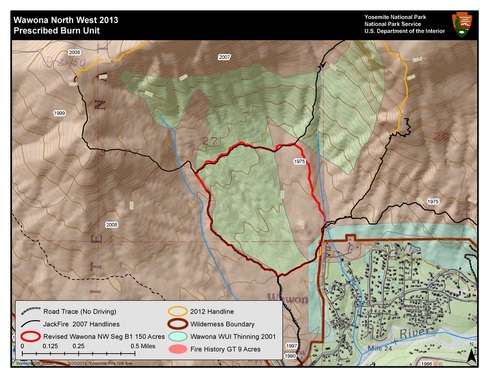
click on image to enlarge
Yosemite National Park fire managers are tentatively planning to begin burning the 150 acre Wawona Northwest Segment B Prescribed Fire on April 2, 2013. However, this date may change due to weather conditions. Ignition will take 2 – 4 days and active burn down will last 1 – 2 weeks.
The primary objective is to reduce hazardous fuels within the mixed conifer forest adjacent to the Wildland Urban Interface (WUI) community of Wawona at the south end of Yosemite. This project creates a large continuous area of reduced fuel by linking together multiple previous fires and treatments including the 2007 and 2008 Wawona Northwest prescribed fires, the 2007 Jack wildfire which was caused by lightning, and a series of mechanical vegetation thinning projects in the 2000’s.
A secondary objective is ecosystem restoration. Applying fire under prescribed conditions mimics the frequent, low intensity lightning caused fires that occurred in Sierras prior to the exclusion of fire which began over 100 years ago under aggressive fire suppression policies. Historically, natural fire burned an average of 16,000 acres annually in Yosemite and played an integral role in shaping Yosemite’s ecosystems. In the absence of frequent fire, unnatural levels of forest biomass have accumulated which has put many of Yosemite’s values at risk, including neighboring communities, and natural and cultural features. As climate changes, these values become increasingly vulnerable to catastrophic wildfire.
Community members and visitors can expect to see crews from various federal and state agencies preparing the burn unit and conducting burn operations in the coming days. Prior to ignition, old fire control lines around the unit will be improved and new ones will be established.
Smoke will be present during the prescribed fire, particularly during late evening and early morning hours. Fire managers are working with the Mariposa County Air Pollution District (MCAPCD) to time the project to coincide with favorable weather that will facilitate good air quality, and disperse smoke into the atmosphere away from the community. Prior to ignition, a burn permit will be issued to the park by MCAPCD and smoke monitoring equipment will be installed in the community. Community members who are sensitive to smoke may want to close their windows and doors and/or consider leaving the area during active ignition of the project in order to reduce their exposure.
The Wawona Northwest prescribed fire project area is identified in the 2004 Yosemite Fire Management Plan/ Environmental Impact Statement and Multi-year Strategic Fuels Management Plan. The goals and objectives for this project conform to the park’s General Management Plan and Vegetation Management Plan.
Updates will be published through the duration of the prescribed fire project.
For additional information:
· Fire information and Education: [email protected]; (415)-464-5133
· Yosemite Fire Management Website: http://www.nps.gov/yose/parkmgmt/rx-fire-projects.htm
· Yosemite Air Quality Web Page: http://www.nps.gov/yose/naturalscience/aqmonitoring.htm
· Yosemite Fire Twitter: http://twitter.com#!/YosemiteFire
· Yosemite Fire Facebook: http://www.facebook.com/pages/Yosemite-Wildland-Fire/124632964255395
Merced River Plan Public Meetings on Thursday, March 14, 2013 in Oakhurst and Friday, March 15, 2013 in Wawona
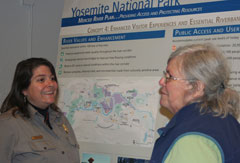
Join us on Thursday, March 14, 2013, from 5-8 pm at the Senior Center in Oakhurst or Friday, March 15, 2013, from 1-4 pm in the Wawona Community Center for a presentation on the Merced River Draft Plan and EIS. These meetings are an opportunity to learn more information about the plan, interact with park staff, and provide feedback. The meeting will consist of a short presentation about the plan, a question and answer session with park managers and planners, and an open house with background materials about the plan.
